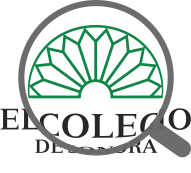Mostrar el registro sencillo del ítem
El agua en Sonora: tan cerca y tan lejos. Estudio de caso del ejido Molino de Camou
| dc.contributor.author | Díaz Caravantes, Rolando E. | |
| dc.contributor.author | Camou Healy, Ernesto | |
| dc.coverage.spatial | MX-SON | en-US |
| dc.creator | DIAZ CARAVANTES, ROLANDO ENRIQUE; 94026 | |
| dc.creator | CAMOU HEALY, ERNESTO; 5742 | |
| dc.date | 2005-09-01 | |
| dc.date.accessioned | 2022-06-28T19:42:52Z | |
| dc.date.available | 2022-06-28T19:42:52Z | |
| dc.date.issued | 2005-09-01 | |
| dc.identifier | https://regionysociedad.colson.edu.mx:8086/index.php/rys/article/view/617 | |
| dc.identifier | https://doi.org/10.22198/rys.2005.34.a617 | |
| dc.identifier.uri | https://repositorio.colson.edu.mx/handle/2012/45824 | |
| dc.description | The Rodolfo Félix Valdés dam, better known as El Molinito, was built in 1991, with the purpose of preventing the eventual floods caused by the Abelardo L. Rodríguez dam, and for supplying water to Hermosillo, the Sonora state capital. Its construction meant benefit for many people, but damaged the ejidatarios of Molino de Camou, whose water supply for irrigation was diminished, and were unable to grow in their fields as they used to.This article analyzes the changes on the irrigation system due to the new dam. This work is divided into three parts. The first one includes general information about the ejido and the dam, provides some background and facts about El Molinito dam and its liaison to Hermosillo. The second part describes the main changes in the irrigation system, and studies the new scenario for water use and control. The third part is dedicated to analyze the changes in the ejidos's productivity since the National Water Commission (CNA, by its Spanish initials) took control of this dam. | en-US |
| dc.description | La presa Rodolfo Félix Valdés, mejor conocida como El Molinito, se construyó en 1991, con el propósito de evitar derrames eventuales de la presa Abelardo L. Rodríguez, y abastecer de agua a Hermosillo, capital del estado de Sonora. Esta obra benefició a un gran número de personas, pero perjudicó a los ejidatarios del Molino de Camou, quienes vieron disminuida su dotación de agua para riego, y ya no pudieron sembrar sus tierras como lo hacían. En este artículo, se analizan los cambios en la unidad de riego del ejido, debidos a la nueva presa. El trabajo está dividido en tres partes. La primera contiene datos generales sobre el ejido Molino de Camou, y antecedentes de la construcción de la presa El Molinito y sus funciones en relación con Hermosillo. En la segunda, se describen las principales modificaciones realizadas en el sistema de riego, y se estudia el nuevo escenario para el uso y control del agua. En la tercera, se analizan los cambios en las actividades productivas, generados a partir de que la Comisión Nacional del Agua (CNA) tomó el control de la presa. | es-ES |
| dc.description.abstract | The Rodolfo Félix Valdés dam, better known as El Molinito, was built in 1991, with the purpose of preventing the eventual floods caused by the Abelardo L. Rodríguez dam, and for supplying water to Hermosillo, the Sonora state capital. Its construction meant benefit for many people, but damaged the ejidatarios of Molino de Camou, whose water supply for irrigation was diminished, and were unable to grow in their fields as they used to.This article analyzes the changes on the irrigation system due to the new dam. This work is divided into three parts. The first one includes general information about the ejido and the dam, provides some background and facts about El Molinito dam and its liaison to Hermosillo. The second part describes the main changes in the irrigation system, and studies the new scenario for water use and control. The third part is dedicated to analyze the changes in the ejidos's productivity since the National Water Commission (CNA, by its Spanish initials) took control of this dam. | en-US |
| dc.description.abstract | La presa Rodolfo Félix Valdés, mejor conocida como El Molinito, se construyó en 1991, con el propósito de evitar derrames eventuales de la presa Abelardo L. Rodríguez, y abastecer de agua a Hermosillo, capital del estado de Sonora. Esta obra benefició a un gran número de personas, pero perjudicó a los ejidatarios del Molino de Camou, quienes vieron disminuida su dotación de agua para riego, y ya no pudieron sembrar sus tierras como lo hacían. En este artículo, se analizan los cambios en la unidad de riego del ejido, debidos a la nueva presa. El trabajo está dividido en tres partes. La primera contiene datos generales sobre el ejido Molino de Camou, y antecedentes de la construcción de la presa El Molinito y sus funciones en relación con Hermosillo. En la segunda, se describen las principales modificaciones realizadas en el sistema de riego, y se estudia el nuevo escenario para el uso y control del agua. En la tercera, se analizan los cambios en las actividades productivas, generados a partir de que la Comisión Nacional del Agua (CNA) tomó el control de la presa. | es-ES |
| dc.language.iso | spa | |
| dc.publisher | El Colegio de Sonora | es-ES |
| dc.rights | Derechos de autor 2017 Rolando E. Díaz Caravantes, Ernesto Camou Healy | es-ES |
| dc.rights | info:eu-repo/semantics/openAccess | es-ES |
| dc.source | 2448-4849 | |
| dc.source | 1870-3925 | |
| dc.source | región y sociedad; Vol. 17 No. 34 (2005): septiembre-diciembre | en-US |
| dc.source | región y sociedad; Vol. 17 Núm. 34 (2005): septiembre-diciembre | es-ES |
| dc.subject | Ciencias Sociales | |
| dc.subject | Water | en-US |
| dc.subject | Dam | en-US |
| dc.subject | Ejido | en-US |
| dc.subject | Sonora | en-US |
| dc.subject | Control | en-US |
| dc.subject | State | en-US |
| dc.subject | Negotiation | en-US |
| dc.subject | National water commission| | en-US |
| dc.subject | Agua | es-ES |
| dc.subject | Presa | es-ES |
| dc.subject | Ejido | es-ES |
| dc.subject | Sonora | es-ES |
| dc.subject | Control | es-ES |
| dc.subject | Estado | es-ES |
| dc.subject | Negociación | es-ES |
| dc.subject | Comisión Nacional del Agua | es-ES |
| dc.subject.lcsh | Water | en-US |
| dc.subject.lcsh | Dam | en-US |
| dc.subject.lcsh | Ejido | en-US |
| dc.subject.lcsh | Sonora | en-US |
| dc.subject.lcsh | Control | en-US |
| dc.subject.lcsh | State | en-US |
| dc.subject.lcsh | Negotiation | en-US |
| dc.subject.lcsh | National water commission| | en-US |
| dc.subject.lcsh | Agua | es-ES |
| dc.subject.lcsh | Presa | es-ES |
| dc.subject.lcsh | Ejido | es-ES |
| dc.subject.lcsh | Sonora | es-ES |
| dc.subject.lcsh | Control | es-ES |
| dc.subject.lcsh | Estado | es-ES |
| dc.subject.lcsh | Negociación | es-ES |
| dc.subject.lcsh | Comisión Nacional del Agua | es-ES |
| dc.title | El agua en Sonora: tan cerca y tan lejos. Estudio de caso del ejido Molino de Camou | es-ES |
| dc.type | info:eu-repo/semantics/article | |
| dc.type | info:eu-repo/semantics/publishedVersion | |
| dc.audience | generalPublic | |
| dc.identificator | 5 |
Ficheros en el ítem
| Ficheros | Tamaño | Formato | Ver |
|---|---|---|---|
|
No hay ficheros asociados a este ítem. |
|||










